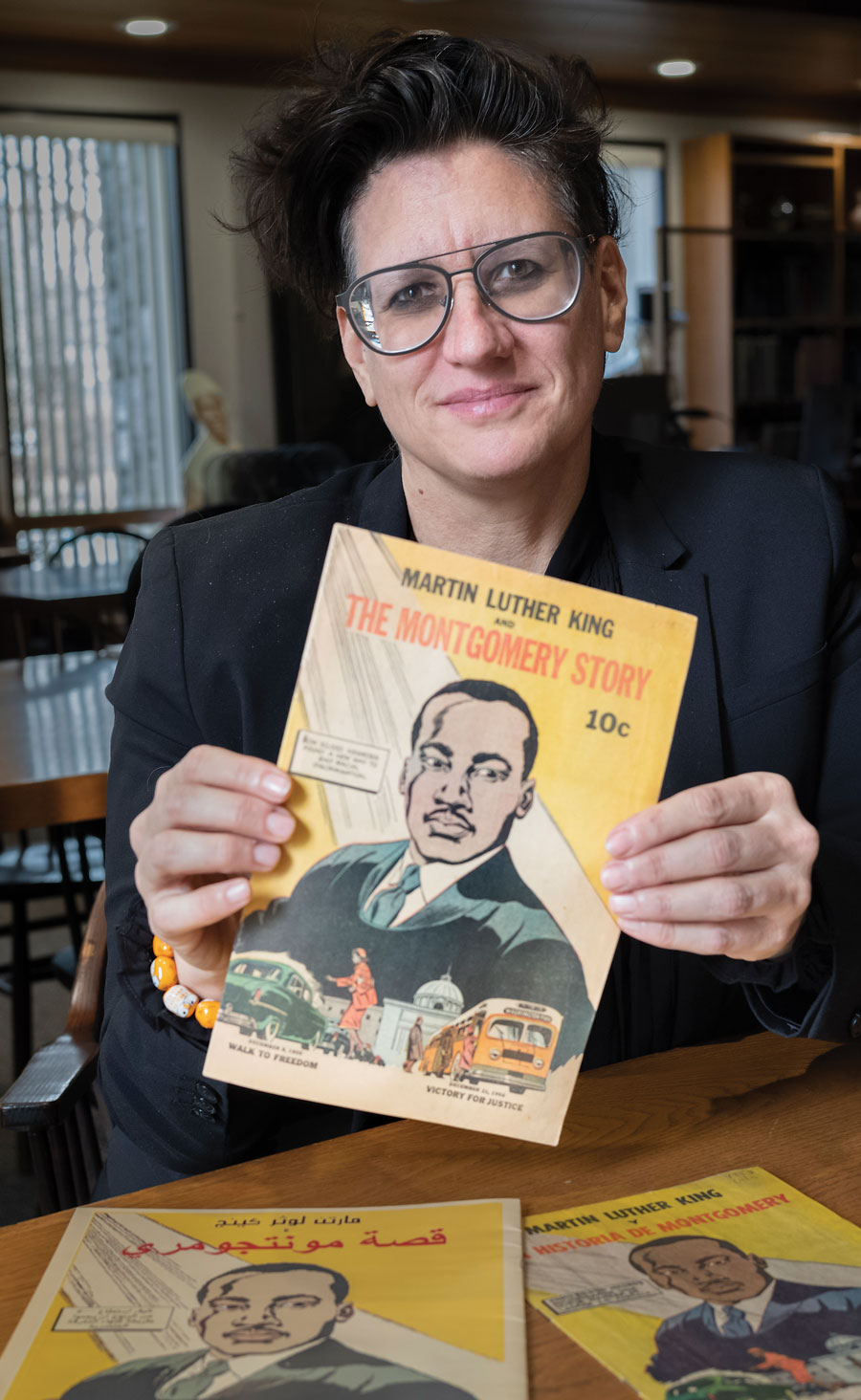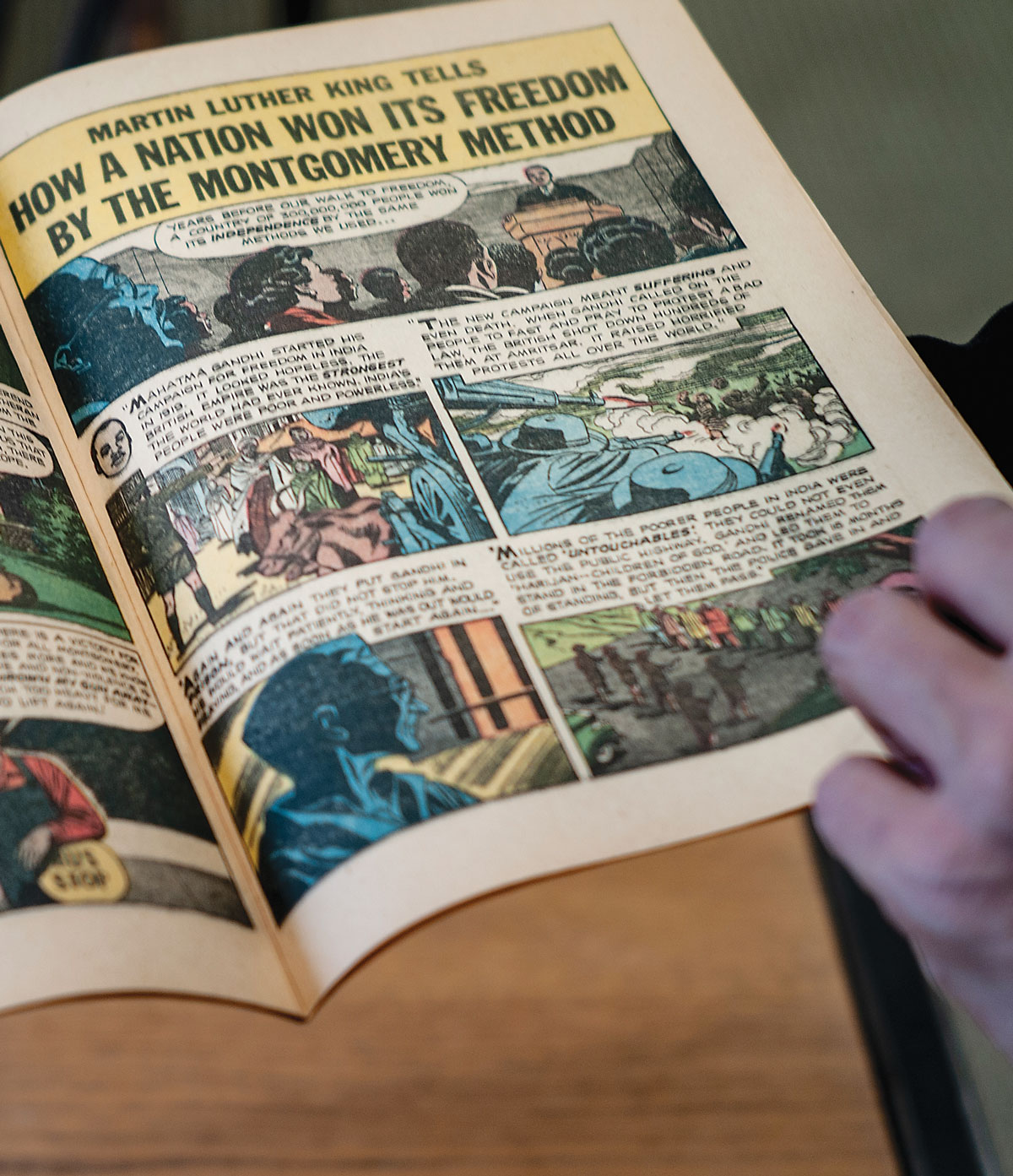looking back


IN 1957, the 16-page comic book Martin Luther King and the Montgomery Story brought then-recent history to life in its vibrant retelling of Dr. Martin Luther King Jr.’s role in the Montgomery bus boycott.
The 13-month boycott began in 1955 with Rosa Parks’ refusal to give up her bus seat to a white passenger. It culminated in a 1956 victory for the civil rights movement: the Supreme Court ruled that segregated busing was unconstitutional.
The pacifist group Fellowship of Reconciliation (FOR) created Martin Luther King and the Montgomery Story to spread Dr. King’s story and his message.
Over 250,000 copies went to print, one of which is located today in Swarthmore College’s Peace Collection.
FOR has Quaker roots dating back to the early 20th century. Swarthmore engages with this history to promote peaceful activism.
In January 2022, Rachel Mattson, George R. Cooley Curator of the Peace Collection, discussed FOR’s new curriculum guide for Martin Luther King and the Montgomery Story.
The updated guide includes overlooked historical details, such as the stories of Claudette Colvin, a young female activist, and Bayard Rustin, a gay man who played a fundamental role in the Civil Rights Movement.
The Peace Collection demonstrates the long history of Martin Luther King and the Montgomery Story as an emblem of nonviolent dissent.
The comic was shared amid protesters in the Middle East, Latin America, and South Africa. Today, copies exist in Arabic, Vietnamese, Italian, and Farsi; Swarthmore has a Spanish edition accompanied by new illustrations. Matteson also spoke to connections between the civil rights movement and the Black Lives Matter Movement. FOR states that their new curriculum guide is designed to shape conversations about “global struggles — past and present — for peace and justice.” This pressing concern for social justice drives Swarthmore’s inquiry into the past.
— EMMA NOVAK ’22